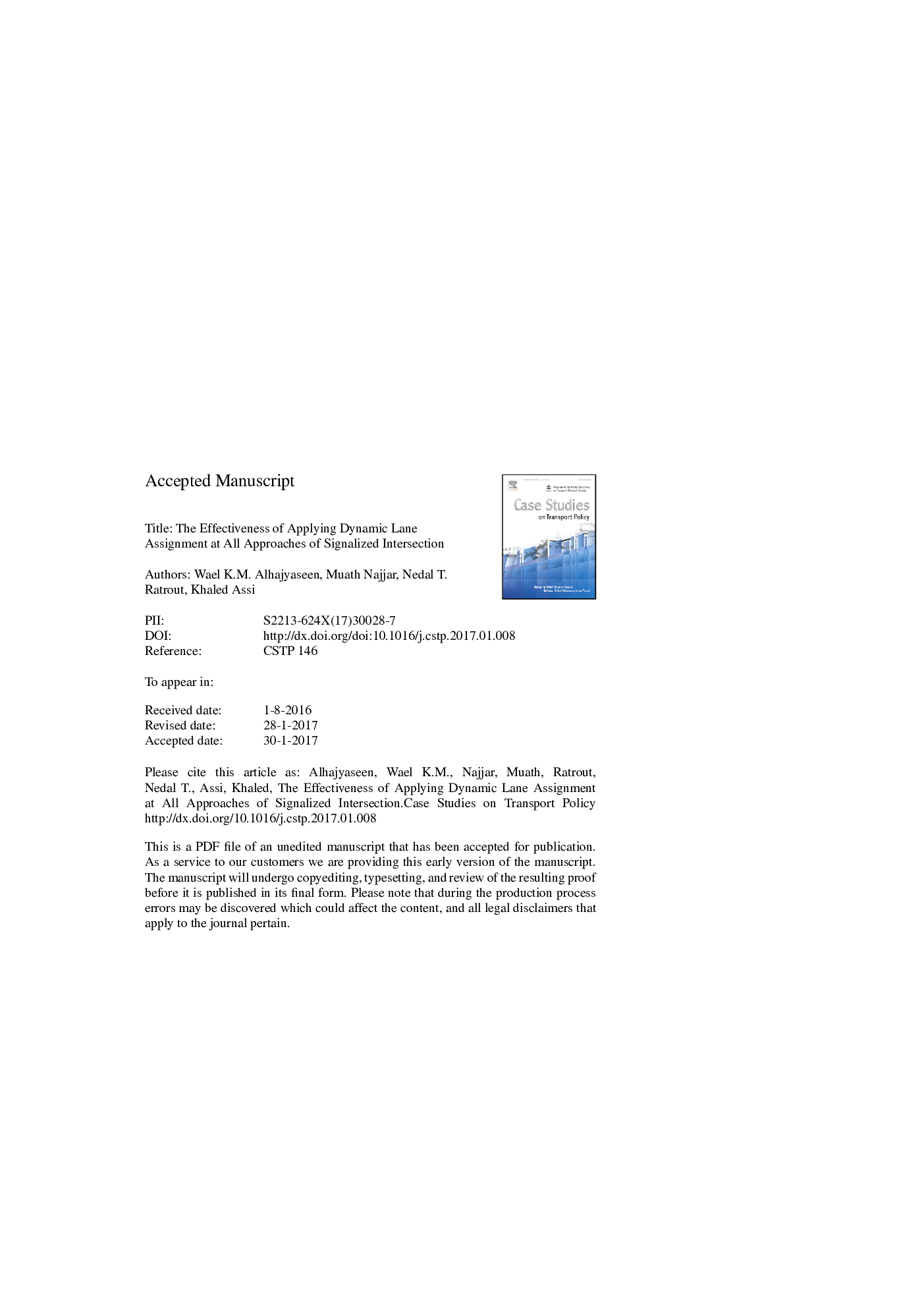| کد مقاله | کد نشریه | سال انتشار | مقاله انگلیسی | نسخه تمام متن |
|---|---|---|---|---|
| 4911652 | 1362785 | 2017 | 23 صفحه PDF | دانلود رایگان |
عنوان انگلیسی مقاله ISI
The effectiveness of applying dynamic lane assignment at all approaches of signalized intersection
ترجمه فارسی عنوان
اثربخشی استفاده از تخصیص خطوط پویا در تمام رویکردهای تقاطع سیگنال
دانلود مقاله + سفارش ترجمه
دانلود مقاله ISI انگلیسی
رایگان برای ایرانیان
کلمات کلیدی
گروه بندی دینامیکی خط، بهینه سازی زمان بندی سیگنال، به حداقل رساندن تاخیر،
موضوعات مرتبط
مهندسی و علوم پایه
سایر رشته های مهندسی
مهندسی عمران و سازه
چکیده انگلیسی
Existing traffic control strategies at signalized intersections aim at the optimization of signal timing parameters while assuming fixed lane assignments to the movements at each approach. Such control results in the waste of time-space resources especially at intersections where significant variations in the demand of turning and through traffic movements occur with time. Such demand variations with fixed space allocation per movement will lead to longer cycle lengths and excessive delays. This study aims to develop a model that integrates the optimization of space allocation (dynamic lane grouping) with the optimization of signal timing parameters for the whole intersection in order to improve its mobility. The effectiveness of dynamic lane grouping is evaluated using collected traffic data at an isolated signalized intersection in Dhahran City, Saudi Arabia. MATLAB environment is utilized to build the model in which the main outputs are the optimal lane group combinations and the optimal signal timing parameters that minimizes average intersection delay. The main input parameters are intersection geometry (mainly number of lanes, and median width) and traffic volumes for all movements. Based on number of lanes at each approach, possible lane group combinations are generated considering the possibility of having shared lanes. A comparison between fixed-lane grouping and dynamic lane grouping strategies in terms of average intersection delay and optimized cycle lengths is presented. It is concluded that operating isolated signalized intersections with controls that consider the optimization of space and time allocations simultaneously can substantially enhance their performance by significantly reducing intersection delay and queue lengths.
ناشر
Database: Elsevier - ScienceDirect (ساینس دایرکت)
Journal: Case Studies on Transport Policy - Volume 5, Issue 2, June 2017, Pages 224-232
Journal: Case Studies on Transport Policy - Volume 5, Issue 2, June 2017, Pages 224-232
نویسندگان
Wael K.M. Alhajyaseen, Muath Najjar, Nedal T. Ratrout, Khaled Assi,
